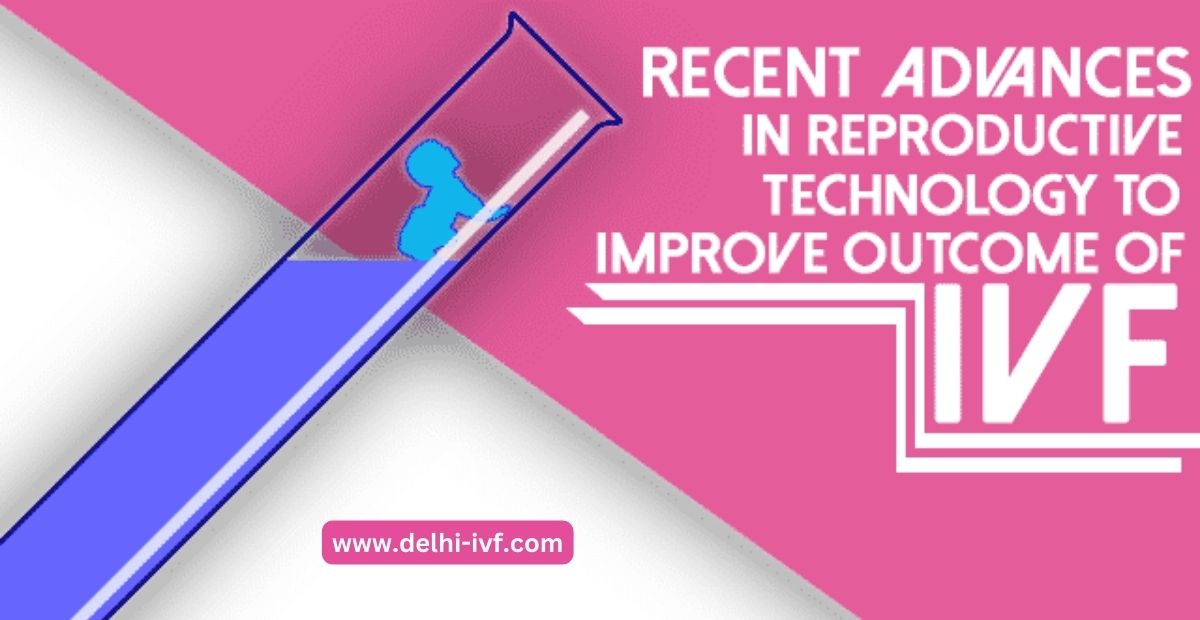Today we will like to discuss with you some of the new and latest approaches in assisted reproductive technology to improve the outcome of IVF treatment in both men and women infertility. The treatment of infertility has become more individualized for each patient and needs to be customized. The treatment is not the same for all patients, as it is not one size fits all. It is upto the discretion of the doctor, based on his experience and expertise to customize the treatment to optimize the results.
The customized approach to increase the success rate can be divided broadly in to following categories.
Increase in Implantation Rate
Treatment For Thin Endometrium
Platelet Rich Plasma (PRP) instillation in the uterus can help to increase the thickness of endometrium to improve embryo implantation rate.
GCSF
Both systematic administration and local perfusion of G-CSF play a beneficial role in ART treatment, especially for recurrent implantation failure (RIF).
Hysteroscopy
Several studies had seemed to find some benefit to hysteroscopy after an IVF cycle had failed. Some clinics now routinely perform the procedure on every woman before beginning IVF
Egg and Embryo freezing (vitrification)
It is a method of freezing, eggs, embryos and sperms at very low temperature suddenly, transforming tissues to a glass like state. This preserves the morphological and physiological state of the cells for storage. The gametes and embryo can be stored in liquid nitrogen for use at other opportune time.
Window of Implantation
In some women during IVF there is repeated failure of implantation, when everything else seems alright. This is due to the implantation window. The implantation window is defined as that period when the uterus is receptive for implantation for the free-lying blastocyst. This period of receptivity is short and results from the programmed sequence of hormonal communication between blastocyst and endometrium. Now there is a test by which window of implantation can be determined in such cases. The procedure is called Personalized embryo transfer (PET).
Embryo Culture
Another technique which helps to improve IVF results is embryo culture. Normally, most embryo are transferred on day three after fertilization. Now , new culture media allow us to keep embryos alive upto day 5 or 6. This allows only healthy, hardy embryos to survive up to day 5-6. Embryos transferred late improves the success rate of IVF.
Improvement in Embryo Quality
Improvement in egg quantity and quality
- DHEA supplementation for diminished ovarian reserve:- Supplementing dehydroepiandrosterone (DHEA) during follicle formation is a as a form of innovative fertility treatment for diminished ovarian reserve and has demonstrated some remarkable results. DHEA treatment for enhancing ovarian has been accepted as standard procedure worldwide.
- CoQ10 (Coenzyme Q10) Supplementation Recently, we have started using CoQ10 (Coenzyme Q10)supplementation in women with diminished ovarian reserve, in addition to DHEA, in order to improve egg quality. While DHEA works on growing eggs by providing an androgen-rich environment to mature in, CoQ10 is an important enzyme for the mitochondria, a small organelle that provides energy to cells–including eggs–in human body. With increase in age of the women there is a corresponding decrease in CoQ10 levels and healthy mitochondria. There is some agreement among scientist about age related decrease in CoQ10 and loss of egg quality.
- Improvements in quality and quantity of eggs specially in older women :-Recently, scientists are looking for other ways to improve egg quality by increasing number of mitochondria in the egg. This is being achieved by using a donor egg from a younger women in which the there are plenty of mitochondria. In a donor egg the nucleus is removed and the nucleus of the mother is transferred into enucleated donor egg. This egg is then fertilized with the sperm of the father. This is called as third party reproduction or mitochondrial transfer technology.
- Stem Cell Therapy for ovarian rejuvenation: Recently, some clinics have started rejuvenating human ovaries with injection of stem cells derived from body fat for premature ovarian failure or early menopausal women with good results.
- PRP therapy: Platelet rich plasma( PRP) made from your blood has also been used to induce ovaries to produce eggs and restore menstrual cycles in post menopausal women.
Improvement in Quality and Quantity of Sperms
- CoQ10 supplementation:- Three months of coenzyme Q10supplementation improves both morphology and motility of sperms. CoQ10 is acting as a potent antioxidant. The coenzyme also plays an role in preserving levels of vitamin E and vitamin C.
Other Methods to Improve IVF Results
- ICSI/IMSI/PICSI: Intra Cytoplasm Sperm Injection(ICSI) has been in use for some time to treat male factor infertility and more recently to improve success rates in IVF cycles. Now there is further improvement in the selection of sperm with the use of very high magnification microscope (IMSI). Further improvement in the selection of sperm can be achieved by relying on the physiological property of sperm rather than on morphological characteristics (PICSI).


 Your Journey to Parenthood Begins with us!
Your Journey to Parenthood Begins with us!